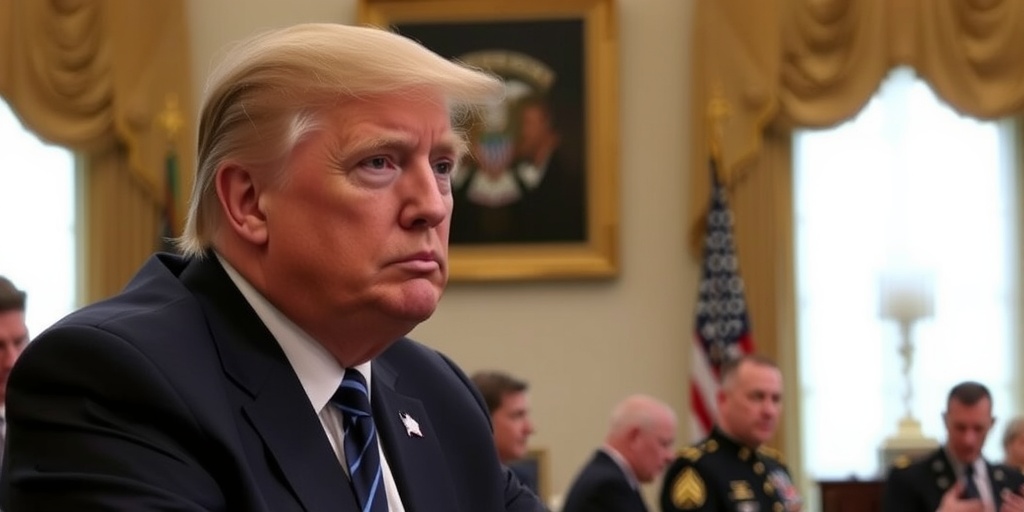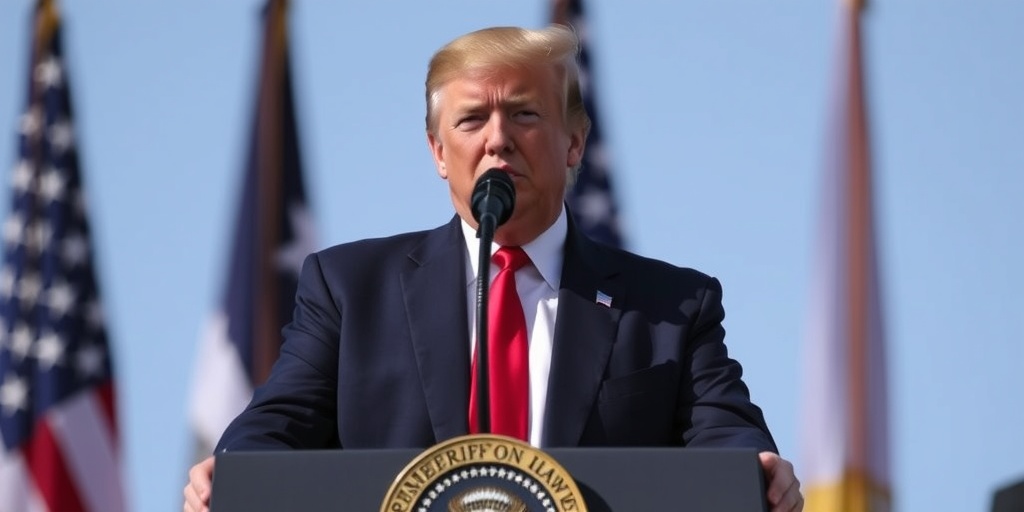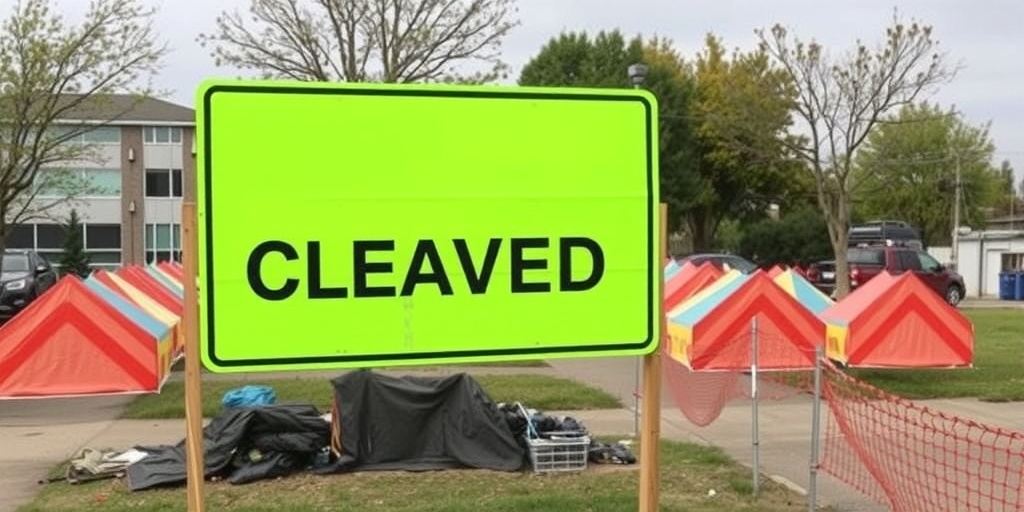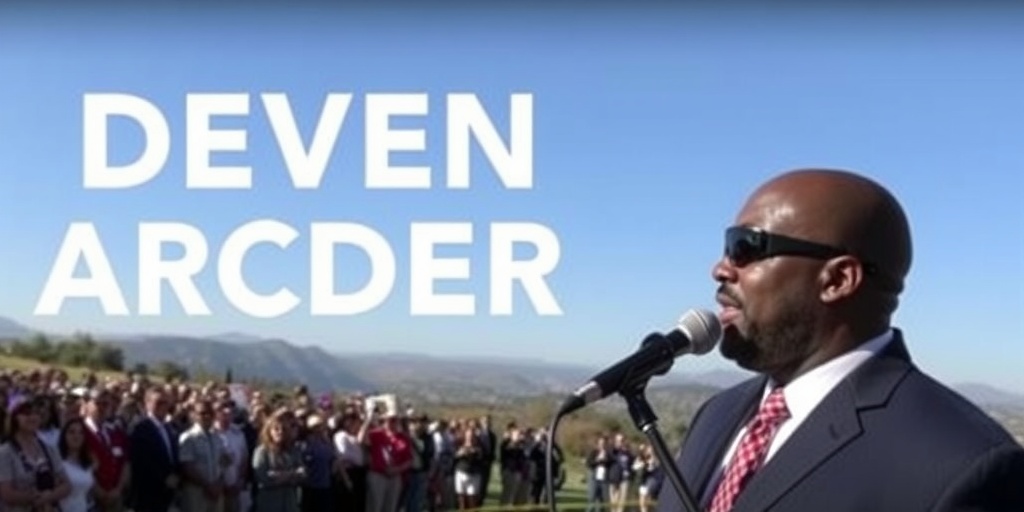Now Reading: Trump’s Directive Targeting the Smithsonian: Key Points to Know
-
01
Trump’s Directive Targeting the Smithsonian: Key Points to Know
Trump’s Directive Targeting the Smithsonian: Key Points to Know

Trump Critiques Smithsonian Institution in New Executive Order
This week, former President Donald Trump issued an executive order targeting the Smithsonian Institution, accusing it of advancing what he termed a “divisive, race-centered ideology.” He further called for a restoration of the Smithsonian to its “rightful place as a symbol of inspiration and American greatness.” This executive order comes amidst ongoing discussions about the narrative frameworks used by the Smithsonian in its exhibitions.
Established in 1846 through the bequest of British scientist James Smithson, the Smithsonian Institution has grown into a vast complex of 21 museums, libraries, research centers, and the National Zoo. It serves as a repository of knowledge and cultural heritage, often referred to as “America’s attic.” Major museums, such as the National Museum of Natural History and the National Air and Space Museum, sit alongside smaller institutions like the Anacostia Community Museum, offering diverse educational experiences.
All Smithsonian museums are free to the public, drawing nearly 17 million visitors in 2023 alone. However, Trump’s recent criticisms have raised questions about how politics and cultural narratives intersect within this esteemed institution. The former president asserted that in recent years, the Smithsonian has been influenced by a perspective that he believes undermines American values. He specifically claimed that the Smithsonian promotes narratives which depict American and Western ideals as harmful or oppressive.
In his directive, Trump asked Vice President JD Vance to collaborate with Congress to allocate funds for exhibitions and programs that align with what he deems shared American values and to prevent any initiatives that foster division based on race. This executive order implies a significant shift in expectations for how historical narratives are presented within these public spaces.
Despite the former president’s concerns, the Smithsonian operates as a public-private partnership, fundamentally independent of direct command from the executive branch. It is overseen by a 17-member Board of Regents that reflects a mix of political affiliations and expertise, comprising both congressional members and private citizens. By law, while the Vice President and the Chief Justice of the United States hold membership on the board, the president is not afforded direct influence over appointments or the institution’s operation.
In his executive order, Trump suggested that the administration seek to appoint regents who align with the new ideological guidelines he desires. However, the Smithsonian’s budgetary framework complicates the extent of presidential influence. The institution has an annual operating budget exceeding $1 billion, funded through a blend of federal appropriations and private donations. Legislative funding decisions lie strictly within Congress’s jurisdiction, limiting the executive branch’s capacity to unilaterally amend financial support.
The Smithsonian has seen its share of political strife in the past, including a significant controversy in 1994 concerning an exhibition on the Enola Gay—the bomber responsible for dropping the atomic bomb on Hiroshima. The backlash from veterans and some congressional members led to the cancellation of what was originally a broader examination of the event, reflecting the challenges of balancing historical accuracy with public sentiment.
More recently, in 2023, some Republican members of Congress voiced concerns over the Smithsonian’s National Museum of the American Latino. They threatened to withhold funding due to worries that incoming exhibitions could narrate a one-dimensional view of Latino experiences, primarily through themes of victimhood. After discussions with museum officials, these members dropped their opposition once adjustments were agreed upon.
New museums often emerge from controversy; for instance, the African American History Museum faced significant resistance before gaining bipartisan support and becoming highly visited. It presently ranks as the third most frequented museum within the Smithsonian network, attracting 1.6 million visitors in 2024 after opening its doors in 2016.
In addition to the Latino museum, the American Women’s History Museum is also in development, both authorized by Congress in 2020. However, neither museum has secured a permanent location, particularly given Congressional prohibitions on new construction on the National Mall. The Latino museum has found temporary exhibition space within the National Museum of American History, while the women’s history museum has initiated online exhibitions.
In a particularly striking instruction within the recent executive order, Trump directed that the new women’s history museum should refrain from recognizing transgender women in any capacity. As these political and social dynamics evolve, both institutions continue to navigate their missions while responding to external pressures related to cultural representation.
As the Smithsonian adapts to these challenges, the ongoing discourse about ideology, representation, and funding underscores the fundamentally intricate relationship between culture and politics in America. President Trump’s executive order suggests an increasing demand for alignment between governmental priorities and the narratives shared by national institutions like the Smithsonian, raising essential questions about who controls cultural memory and how history is told in the public sphere.
Stay Informed With the Latest & Most Important News
Previous Post
Next Post
-
 01New technology breakthrough has everyone talking right now
01New technology breakthrough has everyone talking right now -
 02Unbelievable life hack everyone needs to try today
02Unbelievable life hack everyone needs to try today -
 03Fascinating discovery found buried deep beneath the ocean
03Fascinating discovery found buried deep beneath the ocean -
 04Man invents genius device that solves everyday problems
04Man invents genius device that solves everyday problems -
 05Shocking discovery that changes what we know forever
05Shocking discovery that changes what we know forever -
 06Internet goes wild over celebrity’s unexpected fashion choice
06Internet goes wild over celebrity’s unexpected fashion choice -
 07Rare animal sighting stuns scientists and wildlife lovers
07Rare animal sighting stuns scientists and wildlife lovers





















